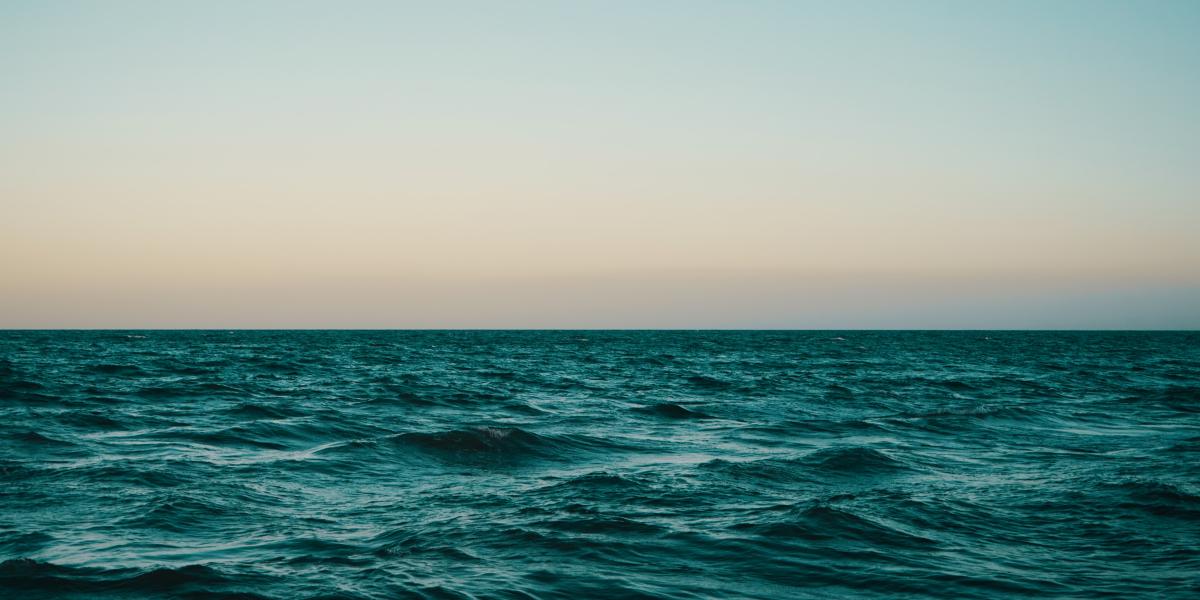
This blog was originally posted by Global Fishing Watch on April 22, 2021. View the original post here.
Imagine if we used bulldozers to scrape up delicious little critters living in the soils of terrestrial environments such as savannas or marshlands. I’d like to think society would immediately stand up against such a practice that would not only destroy entire ecosystems but, as any farmer knows, would induce erosion and damage the quality of the soil itself, stripping it of its valuable nutrients and releasing carbon. If this was done on peatlands—one of the most carbon-rich ecosystems in the world—the impacts on carbon cycling and CO2 emissions to the atmosphere would be huge. Well, it turns out this has been happening for decades to the most carbon-rich ecosystem of all: the ocean floor.
Bottom trawling, a fishing practice that drags heavy nets along the seafloor to scrape up species like shrimp and plaice, is a destructive and non-selective type of fishing whose impacts on deep-sea marine biodiversity and ecosystems are well-studied. For instance, over the past 65 years, bottom trawlers have unintentionally caught—and discarded overboard—at least 437 million tons of non-target fish and invertebrates; a loss of around at $560 billion dollars. In terms of the economic profitability of the bottom trawling industry, research suggests that many of the world’s trawling fleets are only able to operate thanks to large government subsidies which offset the hefty operational costs—mainly fuel—and artificially prop up profits. However, the extent to which bottom trawling impacts ocean sediments, especially the carbon that has been stored for millennia, was, until recently, unknown.
A blueprint for ocean protection
Three years ago, I joined a team of 25 scientists from multiple disciplines gathered at the National Geographic Society headquarters in Washington D.C. We’d been convened by Dr. Enric Sala, explorer-in-residence and founder of the society’s Pristine Seas project, to create a global blueprint for ocean conservation for the next decade. Particularly, we aimed to set a science-based plan to prioritize ocean protection, integrating benefits to food provision and carbon sequestration with conservation of biodiversity. The motivations were many. First, the global biodiversity conservation targets set in Japan in 2010 were reaching their expiration date and it was clear we were not going to achieve the target of protecting 10 percent of the ocean by 2020. Today, less than 3 percent of the ocean is highly protected. If we were to do better at the next Convention for Biological Diversity—planned for 2021 in China—and the following decade, we needed to have a better science-based plan to prioritize our actions. Second, progress in ocean conservation has been hindered by a long-standing view that conservation and exploitation of marine resources are at odds with each other. Yet, decades of scientific research tell us that well-designed and enforced marine protected areas (MPAs) can be very effective tools to help recover fisheries where overexploitation is chronic and the resources to conduct data-intensive fisheries management are limited. With our analysis, we wanted to help break this divide and identify the areas where MPAs could make the biggest difference to improve catch. Third, it’s known that without nature’s contributions to ameliorating climate change—namely, natural carbon sequestration—our chances to achieve global climate targets are slim. The ocean sequesters about half of our CO2 emissions to the atmosphere and the seafloor is the world’s largest carbon repository, offering a valuable solution to combat climate change. Yet, we often see the ocean as another victim of climate change, we ignore the important services it provides in this fight, and our responsibility to ensure it continues being one of our greatest allies.
Two core principles would guide our efforts. First, we did not want to be prescriptive, draw lines on a map, or suggest the exact location or amount of protection needed. Instead, we wanted to be target agnostic and produce a global ranking where each pixel would be given a relative value of importance for each objective: biodiversity conservation, food provision and carbon storage. Second, we did not want to assume that everything that is not protected would be lost. Instead, we’d use the best available knowledge on human impacts on the ocean to estimate business-as-usual counterfactuals and maximize the difference made by protection. Here, we needed to carefully map out and disentangle human impacts in the ocean into two categories: those abatable with MPAs, for example habitat destruction and fishing, and those that aren’t, such as pollution. That is where Global Fishing Watch was crucial to the project’s success.
The Results
Protecting biodiversity
We set out to find the places where highly protected MPAs would be most effective at minimizing extinction risk, maintaining key species roles in marine ecosystems, and preserving the evolutionary history of marine life, all while ensuring representation of the variety of biogeographic regions of the ocean. Using more than 6,000 global data layers on the distribution of species, the density of different types of seamounts, the biogeographic provinces of the coastal, pelagic and deep-sea, alongside key species-specific characteristics—extinction risk, evolutionary history and functional distinctiveness—we found that global priorities for ocean protection are distributed throughout the ocean and most coastal nations have an important contribution to make. Ninety percent of the most important 10 percent of the ocean for biodiversity conservation is within exclusive economic zones and priority areas beyond national jurisdiction are clustered around seamount chains, offshore plateaus and biogeographically unique areas such as the Antarctic Peninsula, the Mascarene Plateau and the Nazca ridge. We found we can get 90 percent of the maximum benefits by strategically protecting 21 percent of the ocean.
Replenishing fisheries
We sought out where MPAs could help rebuild overfished stocks and increase global catch. Using the spatial distribution, management status and important life-history traits of over one thousand marine fish and invertebrates, we found that by strategically protecting less than 6 percent of the ocean, we could boost global catches by up to 8 million metric tons. Priority locations were found throughout poorly managed and under-resourced areas including the west coast of Africa, the North Sea and the Mediterranean.
Securing carbon
We also identified the areas where MPAs could help safeguard carbon stored in the seafloor from destructive human activities. First, we built a global map of carbon in ocean sediments and found that the ocean seafloor stores more than twice the amount of carbon of all terrestrial soils together! Next, the question was: where and to what extent is this carbon being impacted by threats we can abate with MPAs? Without Global Fishing Watch data, this question would have been unanswerable. We mapped the global distribution of fishing effort by bottom trawlers and dredgers over the past 5 years with a 1km2 resolution and estimated that the trackable fleet (>20,000 vessels) trawls an average of 4.9 million square kilometers of the ocean floor each year, or ~1.3 percent of the ocean. Previous research suggests bottom trawling nets penetrate the seafloor on average 2.4 cm with each pass; some of that disturbed sediment—and the carbon within it—is moved elsewhere, some resettles back, and a fraction of it is reoxygenated, made available for consumption by organisms and released as CO2 in the water. We estimate that the amount of CO2 liberated into the water as a consequence of bottom trawling is between 0.52-1.47 billion metric tons each year. As a reference point, global air travel—responsible for ~2 percent of the global CO2 emissions—releases 0.9 billion tons of CO2 into the atmosphere each year. Most of these emissions are generated in the exclusive economic zones of countries with very large trawling fleets, such as China, and in other heavily trawled areas, like the North Sea. This finding highlights that despite the relatively small spatial footprint of bottom trawling, its impacts on carbon storage in the ocean are far from negligible. The wide range of values we present reflects the infancy of this research. More work is needed to refine the estimates; understand the impacts this CO2 source might have on local water chemistry and on the ocean’s ability to continue sequestering carbon; and estimate how much of these emissions, if any, might make it to the atmosphere and over what timescales.
Maximizing the benefits of ocean protection
Identifying the places in the ocean where conservation can give us the most benefits for each of these objectives is useful in its own right. However, we use, enjoy and need the ocean in so many ways that the main contribution of our work is to provide a flexible framework where multiple objectives can be prioritized simultaneously—including others not analyzed here—and in a way that reflects the preferences of a local community, nation or society. There is not a single best solution to address all the challenges the ocean is facing. But now more than ever before, thanks to the rapid advancement of ocean-monitoring technologies such as Global Fishing Watch, we have the tools and data to advance entire fields of research and produce transparent impact-oriented science to inform decision making at multiple levels.



